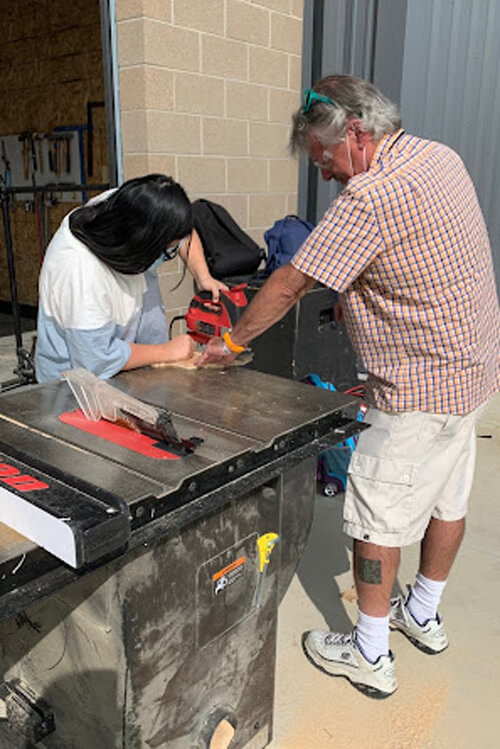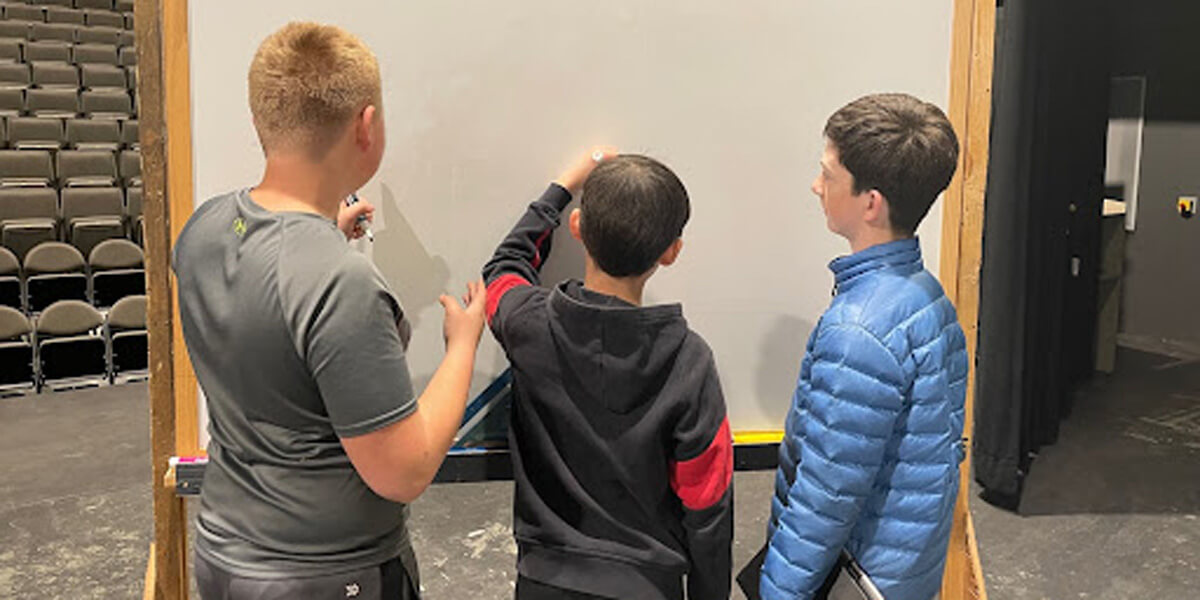A few weeks ago, I was observing one of our Colorado Academy Middle School technical theater classes. Together with their students, teachers Steve Scherer and James Meehan were beginning the design process of the Theater Department’s next on-stage set.
I stood behind three students as they stared at a blank whiteboard, poised and ready to brainstorm and document their many ideas. I was so excited because it is this moment in the creative process that got me into education in the first place.
At this moment, these young students are about to be reminded that they are creators. They are beginning a journey of making something from scratch, something that has not existed before, and they are doing it with their very own hands. From concept to execution, this process is vital to the human experience.
The importance of manual competence

Some of you may have heard me talk about manual competence before because I feel so strongly about its role for human beings. It is the practice of using our hands to make or fix things. As a species, we were designed to be manually competent for our own survival. Our survival used to depend on our ability to build the shelters we lived under, to make the clothes on our backs, and to plant the food we ate. Today, we have machines and computers that have replaced much of that work. Because of this, we have more time to nurture our intellectual competence, in lieu of the more hands-on work. This is great. But is it?
Here’s the problem: humans are experiencing more mental health issues than ever before. As computers and machines do more and more of our work, and we sit more idle, we often come home from work or school feeling empty and anxious. Many of us detach from the day with video games, TV, social media, or look at a screen doing homework. We are not doing some of the work we were designed to do.
One day last year, I visited another middle school technical theater class. The students were learning and practicing how to use a hammer effectively. They learned how the physics of the tool works better with their hand at the end of the shaft, rather than close to the head. They each pounded over fifty nails into scraps of 2 x 4 wood. Some shook their hands as they ached from the repetition of movement and force required by their muscles. At the end of class, the students were grinning from ear to ear. Why? Because they practiced something over and over that was hard and ended with success. They could see over fifty nails in their piece of wood, and they did it. That’s called pride, and pride feeds our souls.
Imagine how our students feel when they look at a set that they have built with their own hands, from concept to creation. The pride that comes from individual (and collaborative) agency not only builds sets, but also empowers us to believe in ourselves, to value ourselves, and to feel good about ourselves.
We all can benefit from putting down our devices and teaching our youth (age appropriately, of course) how to use even the simplest of hand tools. Let’s show them how to use a power drill, a broom, a lawn mower, or rake. It’s good for the soul.
